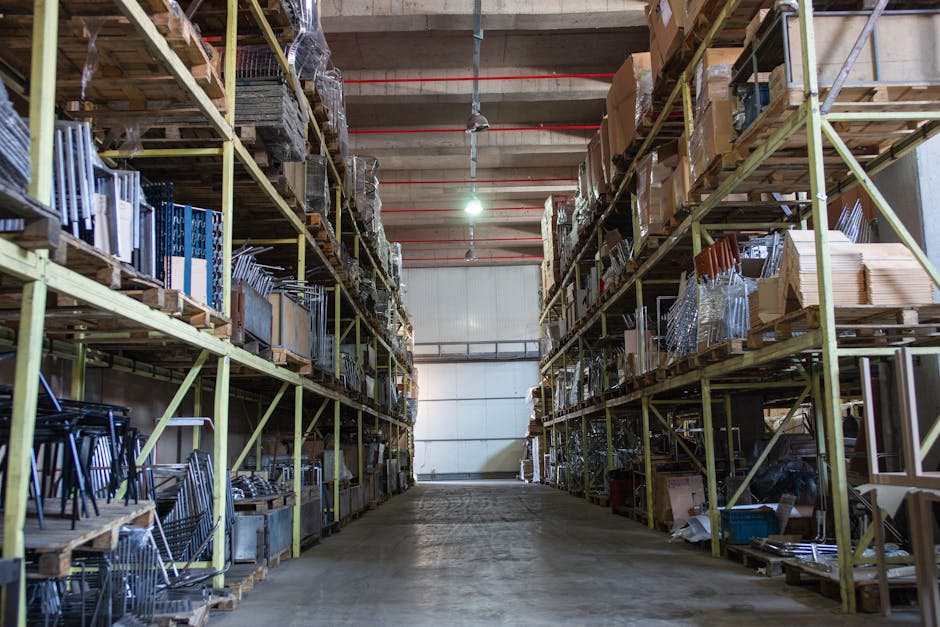Automated Warehouse Inventory Solutions: Streamline Your Logistics
Imagine your warehouse as a busy orchestra, each section playing its part to create harmony. Now picture this orchestra running without a conductor, chaos, right? That’s what managing inventory manually can feel like. Automated warehouse inventory solutions are the conductors of modern logistics, ensuring every part of your operation works in perfect sync.

If you’re still relying on spreadsheets or even handwritten notes to track inventory, it’s time to take a closer look at why automation might just be
What Are Automated Warehouse Inventory Solutions?
At their core, these systems use technology to monitor and manage stock levels, track shipments, and organize storage in real-time. This often involves a combination of hardware like barcode scanners or RFID tags and software that crunches the numbers behind the scenes. Some advanced setups even incorporate robotics and artificial intelligence to move goods or predict demand patterns.
Think of it as upgrading from a paper map to a GPS system. While you can technically get where you need to go with the old method, automation ensures you’re taking the most efficient route, saving time and reducing errors along the way.
The Benefits of Automation
Let’s break down how these solutions can transform your logistics operations:
- Accuracy That Minimizes Errors: Human error in inventory management is almost inevitable. Forgetting to record a shipment or mislabeling stock can lead to costly mistakes. Automated systems eliminate much of this risk by tracking everything digitally in real-time.
- Time Savings: Manually counting inventory or updating spreadsheets eats into valuable hours that could be spent on more strategic tasks. Automation streamlines repetitive activities, freeing up your workforce for higher-value responsibilities.
- Cost Efficiency: Yes, there’s an upfront cost for implementing these systems, but the long-term savings are substantial. By reducing overstocking, understocking, and operational inefficiencies, businesses often see a strong return on investment.
- Real-Time Insights: With automated solutions, you don’t have to wait until the end of the day (or worse, the end of the month) to understand your inventory levels. Real-time data allows for better decision-making on the fly.
Real-World Applications
A great example comes from Amazon’s fulfillment centers. Their warehouses rely heavily on robots that pick items from shelves and deliver them to human packers. This minimizes walking time for workers and speeds up order fulfillment significantly. Similarly, companies like Walmart employ RFID tags that allow them to track individual products as they move through their supply chain. These technologies not only improve efficiency but also enhance customer satisfaction by ensuring products are available when needed.
You don’t need to be a global giant to benefit from automation, though. Smaller businesses are increasingly adopting cloud-based inventory management tools that integrate seamlessly with e-commerce platforms like Shopify or WooCommerce. These solutions make it easier for even modest operations to compete with larger players by offering similar efficiencies at an affordable scale.
How To Choose the Right System
Not all automated solutions are created equal, so selecting one that fits your business needs is essential. Here are some factors to consider:
- Scalability: If you’re planning for growth and who isn’t?, make sure your system can scale with you. Look for software that accommodates expanding product lines or higher order volumes without skipping a beat.
- Integration Capabilities: Your inventory solution should work well with existing tools like accounting software or customer relationship management (CRM) systems. Integration reduces redundancies and ensures all parts of your operation are aligned.
- User-Friendliness: Even the most advanced system won’t help if no one knows how to use it properly. Look for intuitive interfaces and robust customer support when making your choice.
- Budget Considerations: While automation often pays off in the long run, it’s crucial to balance features against costs when evaluating options.
The Future of Warehousing
While we may not have fully automated warehouses that run entirely without human intervention just yet, we’re moving closer every day. Technologies like drones for stocktaking or AI-driven demand forecasting are already being tested and implemented by forward-thinking companies.
If this all sounds a bit too futuristic for your current needs, don’t worry, small steps can still make a big difference. Something as simple as using barcode scanners instead of manual entry can significantly reduce errors and speed up processes. The important thing is to start exploring what level of automation makes sense for your operation now while keeping an eye on developments that could benefit you down the road.
Your warehouse doesn’t need to resemble a sci-fi movie set to reap the benefits of automated inventory solutions. By introducing even basic technologies into your logistics workflow, you’ll likely find yourself saving time, cutting costs, and delivering better results faster than ever before.
If you’re ready to take control of your logistics and bring order to what may feel like chaos at times, it might be worth diving into what automated warehouse inventory solutions can do for you.
